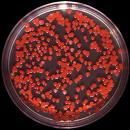There are now 46,000 pieces of plastic per square kilometre of the world’s oceans, killing a million seabirds and 100,000 marine mammals each year. Worse still, there seems to be nothing we can do to clean it up. So how do we turn the tide?
Way out in the Pacific Ocean, in an area once known as the doldrums, an enormous, accidental monument to modern society has formed. Invisible to satellites, poorly understood by scientists and perhaps twice the size of France, the Great Pacific Garbage Patch is not a solid mass, as is sometimes imagined, but a kind of marine soup whose main ingredient is floating plastic debris.
It was discovered in 1997 by a Californian sailor, surfer, volunteer environmentalist and early-retired furniture restorer named Charles Moore, who was heading home with his crew from a sailing race in Hawaii, at the helm of a 50ft catamaran that he had built himself.
For the hell of it, he decided to turn on the engine and take a shortcut across the edge of the North Pacific Subtropical Gyre, a region that seafarers have long avoided. It is a perennial high pressure zone, an immense slowly spiralling vortex of warm equatorial air that pulls in winds and turns them gently until they expire. Several major sea currents also converge in the gyre and bring with them most of the flotsam from the Pacific coasts of Southeast Asia, North America, Canada and Mexico. Fifty years ago nearly all that flotsam was biodegradable. These days it is 90 per cent plastic.
‘It took us a week to get across and there was always some plastic thing bobbing by,’ says Moore, who speaks in a jaded, sardonic drawl that occasionally flares up into heartfelt oratory. ‘Bottle caps, toothbrushes, styrofoam cups, detergent bottles, pieces of polystyrene packaging and plastic bags. Half of it was just little chips that we couldn’t identify. It wasn’t a revelation so much as a gradual sinking feeling that something was terribly wrong here. Two years later I went back with a fine-mesh net, and that was the real mind-boggling discovery.’
Floating beneath the surface of the water, to a depth of 10 metres, was a multitude of small plastic flecks and particles, in many colours, swirling like snowflakes or fish food. An awful thought occurred to Moore and he started measuring the weight of plastic in the water compared to that of plankton. Plastic won, and it wasn’t even close. ‘We found six times more plastic than plankton, and this was just colossal,’ he says. ‘No one had any idea this was happening, or what it might mean for marine ecosystems, or even where all this stuff was coming from.’
More… ➡
– Research Thanks to Robin S.

